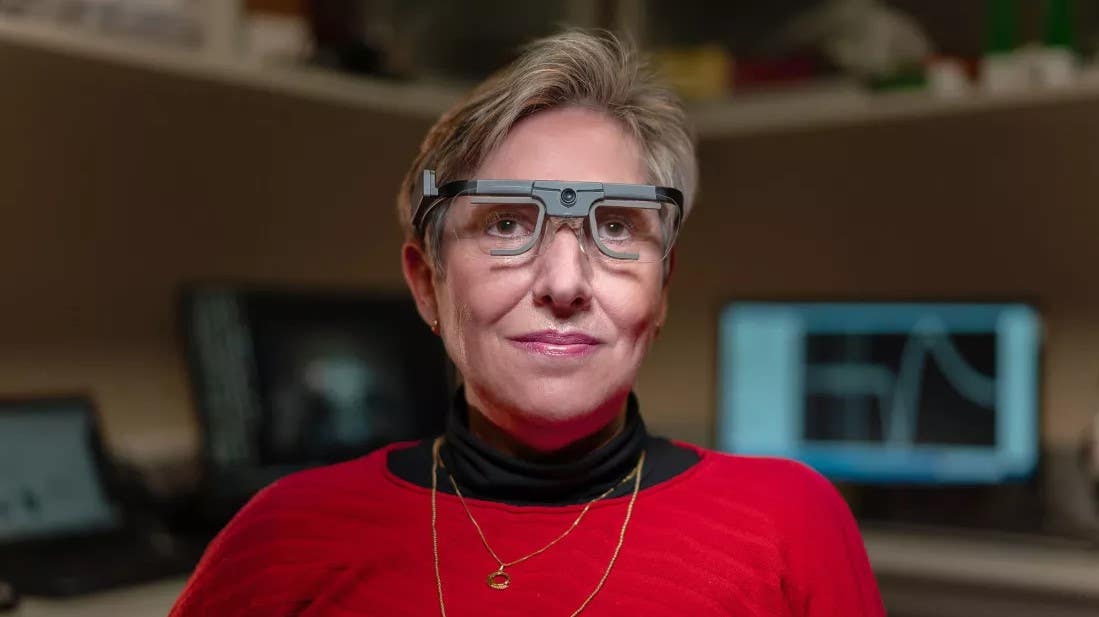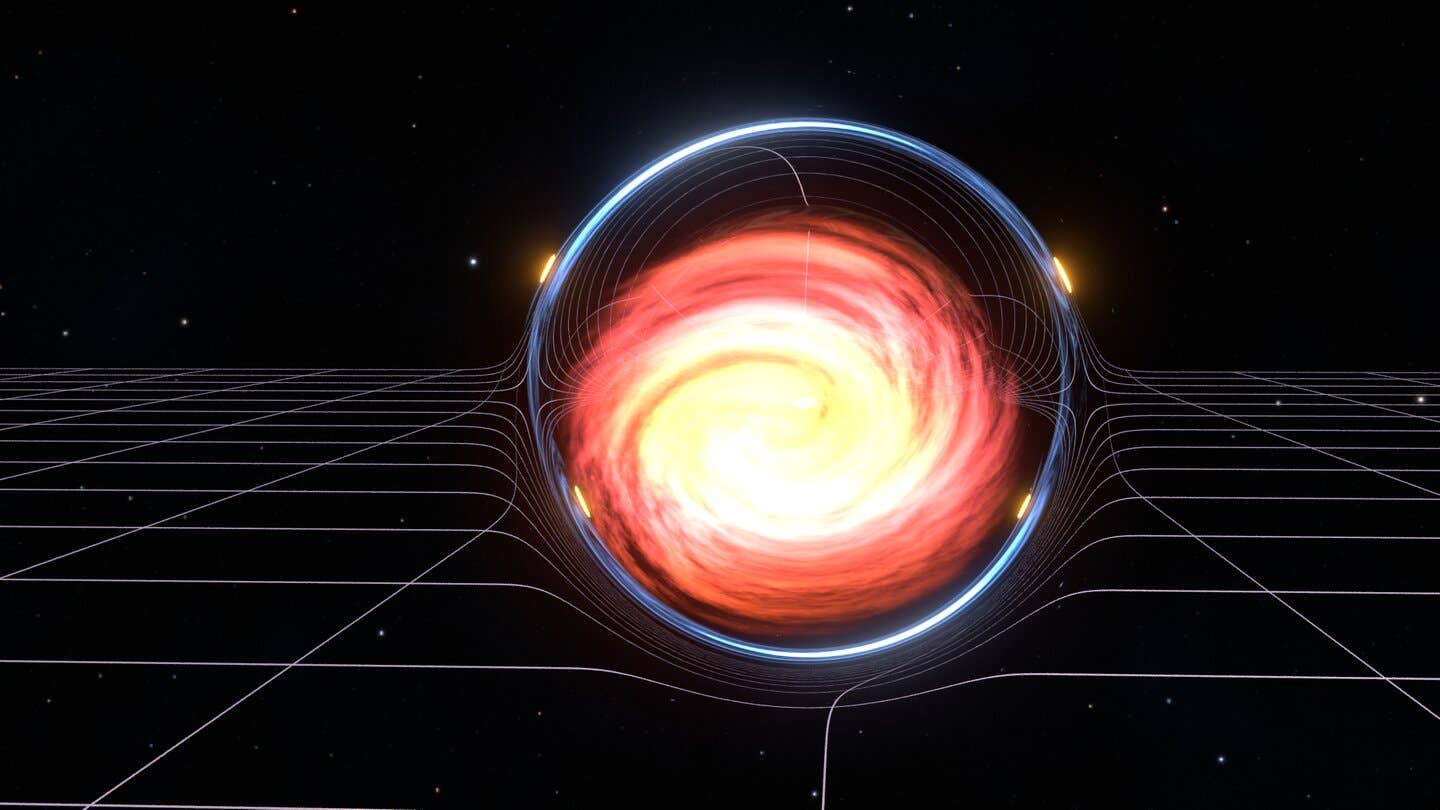Brain Implant Gives Blind Woman Artificial Vision in Scientific First
Brain implant allows patient to see shapes, letters after more than 16 years of blindness.

[Oct 31, 2021: Carly Cassella]
Berna Gomez, wearing glasses to test the prosthesis. (CREDIT: John A. Moran Eye Center at the University of Utah)
A 'visual prosthesis' implanted directly into the brain has allowed a blind woman to perceive two-dimensional shapes and letters for the first time in 16 years.
The breakthrough was achieved using an implant known as the Moran|Cortivis Prosthesis. The device, which consists of 96 individual electrodes, is implanted directly in the patient's visual cortex. Once in place, the implant's electrodes can be stimulated in specific combinations to deliver "images" directly to the patient's mind.
According to the Journal of Clinical Investigation, the implant has successfully presented images ranging from spots of light and horizontal lines to some uppercase and lowercase letters.
At age 42, Berna Gomez developed toxic optic neuropathy, a deleterious medical condition that rapidly destroyed the optic nerves connecting her eyes to her brain.
Related Stories
In just a few days, the faces of Gomez' two children and her husband had faded into darkness, and her career as a science teacher had come to an unexpected end.
Then, in 2018, at age 57, Gomez made a brave decision. She volunteered to be the very first person to have a tiny electrode with a hundred microneedles implanted into the visual region of her brain. The prototype would be no larger than a penny, roughly 4 mm by 4 mm, and it would be taken out again after six months.
After undergoing neurosurgery to implant the device in Spain, Gomez spent the next six months going into the lab every day for four hours to undergo tests and training with the new prosthesis.
The first two months were largely spent getting Gomez to differentiate between the spontaneous pinpricks of light she still occasionally sees in her mind, and the spots of light that were induced by direct stimulation of her prosthesis.
Once she could do this, researchers could start presenting her with actual visual challenges.
When an electrode in her prosthesis was stimulated, Gomez reported 'seeing' a prick of light, known as a phosphene. Depending on the strength of the stimulation, the spot of light could be brighter or more faded, a white color or more of a sepia tone.
When more than two electrodes were simultaneously stimulated, Gomez found it easier to perceive the spots of light. Some stimulation patterns looked like closely spaced dots, while others were more like horizontal lines.
"I can see something!" Gomez exclaimed upon glimpsing a white line in her brain in 2018.
Vertical lines were the hardest for researchers to induce, but by the end of training Gomez was able to correctly discriminate between horizontal and vertical patterns with an accuracy of 100 percent.
Like these kind of feel good stories? Get the Brighter Side of News' newsletter.
Tags: #New_Innovations, #Medical_News, #Vision, #Research, #Brain_Implant, #Technology, #The_Brighter_Side_of_News



